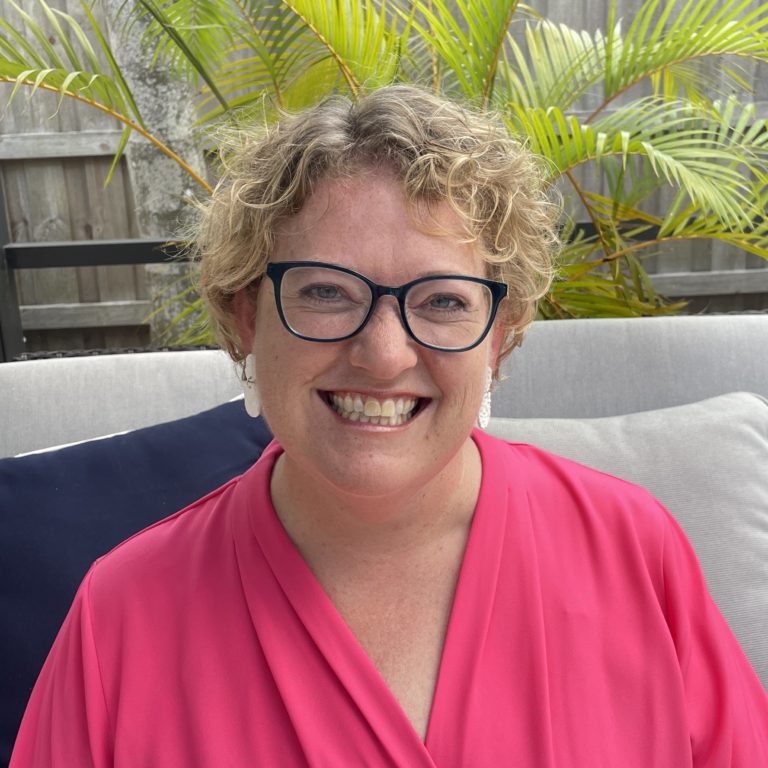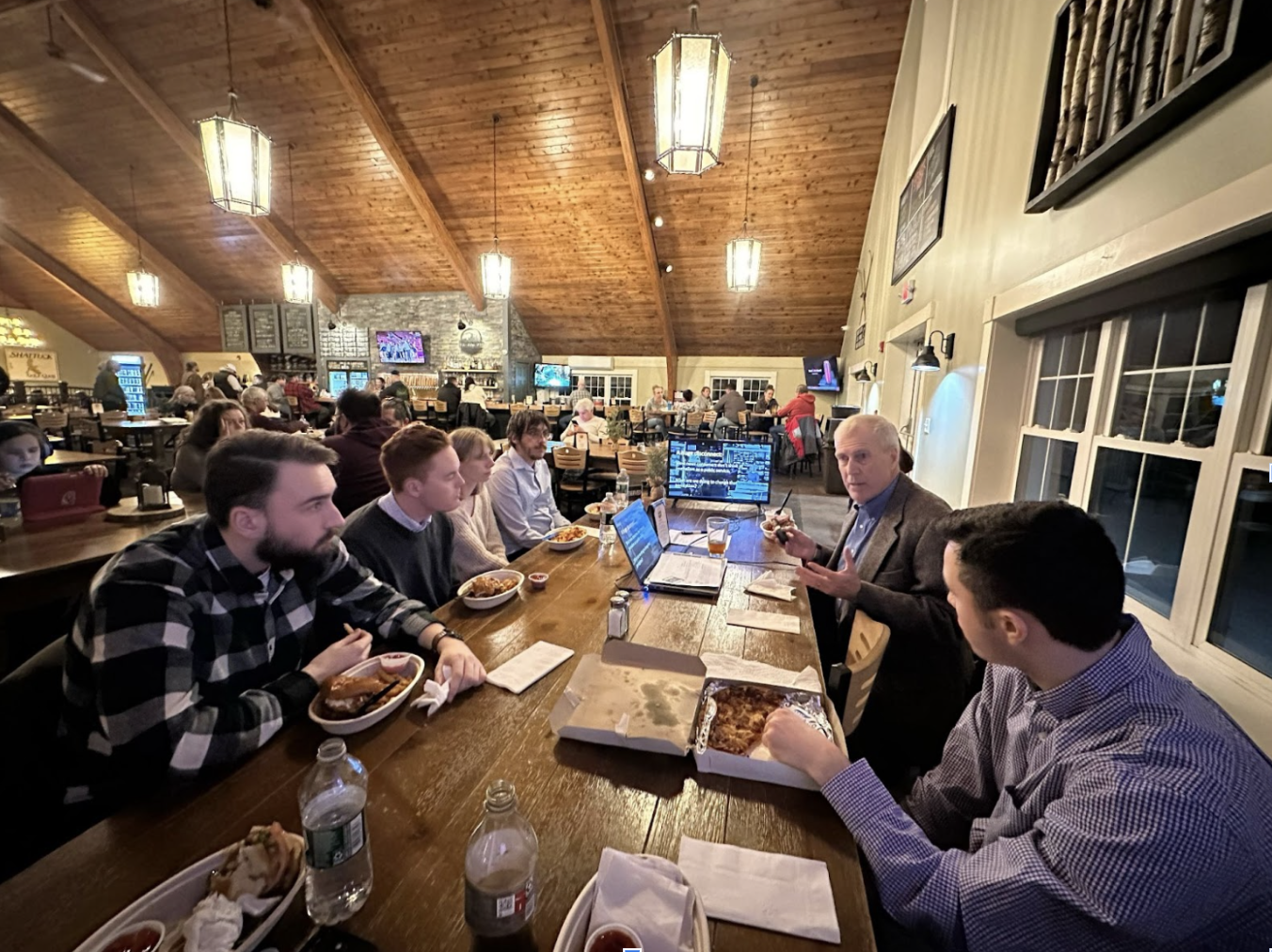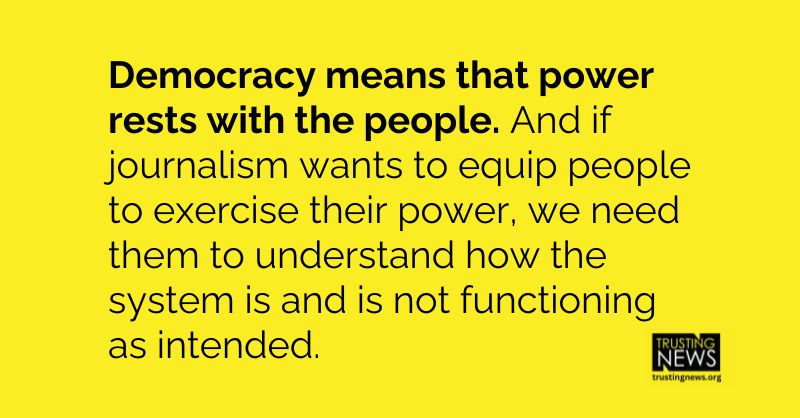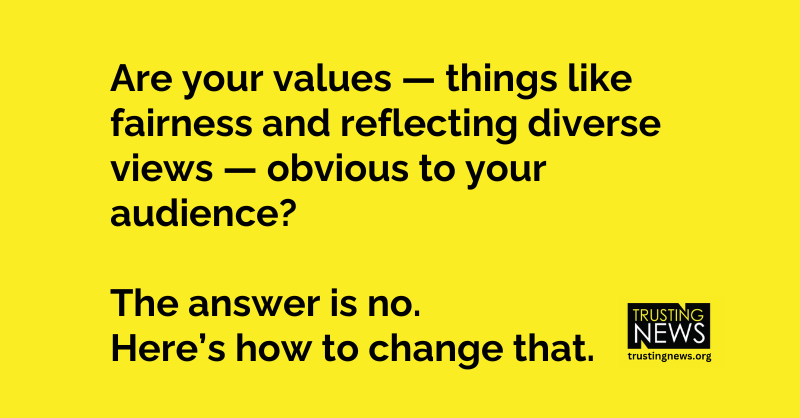
In our work with newsrooms, there are ideas we recommend that are almost universally applicable when it comes to demonstrating credibility and earning trust with a community. They include doing a better job explaining journalism ethics, a newsroom’s mission, funding, the reporting process and our integrity. At Trusting News we train journalists on transparency and […]
Journalists, hold yourself accountable for earning the trust of BIPOC communities. This rubric will help.
In our work with newsrooms, there are ideas we recommend that are almost universally applicable when it comes to demonstrating credibility and earning trust with a community. They include doing a better job explaining journalism ethics, a newsroom’s mission, funding, the reporting process and our integrity.
At Trusting News we train journalists on transparency and engagement strategies that address those challenges. Sometimes, though, the lack of trust local journalists are working to overcome is about a more specific issue or focused on a specific community.
When it comes to communities of color, the challenge is often not about rebuilding trust, but about building a relationship from scratch. When community members feel the news has not been made by or for people like them, there isn’t a connection or loyalty to build on. Worse, some communities have been legitimately harmed by news coverage that has misrepresented or exploited them.
Most newsrooms know this, and many would like to invest in doing better. But figuring out what the specific goals should be and how to measure improvement can be complicated.
A new piece in the Columbia Journalism Review from Letrell Deshan Crittenden of Thomas Jefferson University offers a concrete, useful starting point for this work.
Crittenden has spent two years developing a rubric for newsrooms that can help assess newsroom staff, processes, coverage and trust. Here’s how he describes the need for it.
Over the years, even as we have paid more attention to issues of systemic racism, scholars and journalists haven’t always taken the best approaches in identifying and eradicating systemic racism from the news. The problem is so vast and complex that attempts at ad hoc solutions aren’t enough to truly challenge the system. When we approach newsrooms and ask them to change, too often the ensuing advocacy focuses on a single immediate issue. When an editor makes a mistake, calls are made for their termination. When a newsroom isn’t diverse, calls are made for more diversity. When news coverage isn’t fair, newsrooms are asked to take a closer look into how they report on and engage communities.
But all of these issues are connected, not isolated incidents of ignorance or racism. Still, in many cases, newsrooms haven’t given much thought on the systemic nature of their problems. And even if they know they have a problem, many lack even a basic understanding of how such issues manifest daily within their news gathering and storytelling practices.
Take a look at Crittenden’s rubric and think about how you would rate your newsroom on his scale of poor to thriving.
As you read it, think about how the rows relate to each other. Consider whether trust — represented on the row second to the bottom — is truly possible when problems exist in the other rows, or if trust might instead represent a sort of summary indicator or an average of the other scores.
Each row represents elements of journalists’ connection with and service to communities of color. Each element is also something that we hear about in our work at Trusting News.

Communities notice when reporters are all white. They notice when management is all white. When users ask questions or make observations about staff diversity, they are too often ignored or given inauthentic or defensive answers.
In addition, BIPOC journalists too often bear an outsized burden both internally (educating and being a sounding board for their colleagues) and publicly (as a non-white face to represent — and be accountable for — the newsroom). Yet too often, they lack the power to create real change. Their insights and experiences are disrespected or ignored when they are in conflict with existing newsroom attitudes or conventions.
News coverage
Journalists often hear they focus too much on problems — on pointing out what’s wrong in the communities we cover (a topic addressed in recent research on values from the American Press Institute and AP-NORC). That’s probably more true with communities of color than anywhere else.
Does your coverage represent the spectrum of life in the BIPOC communities you cover? Or does it focus on what the rubric calls areas of deficiency (such as poor schools, poverty and crime)? Crime coverage is a topic I’ll be addressing in an Online News Association session in June, in collaboration with Martin Reynolds of the Maynard Institute. We think it’s time newsrooms asked better questions about the goals of and harm caused by crime coverage.
All groups of people have blind spots. It’s up to newsrooms to recognize theirs and work to overcome them. For inspiration, check out the recent launch of the Black Tennessee Voices newsletter from the Tennessean. It represents a deep commitment from David Plazas, LeBron Hill and their colleagues to be more reflective of the community they aim to serve.
Engagement, and assessing trust
Once we make it to the bottom two rows, we’re asked to assess our own dedication to reaching out to communities of color. We’re also asked to assess how those communities feel about our journalism. Do they trust us to represent them fairly and adequately? Are they willing to engage with us?
The obvious question is: How do we know? The answer is represented in the engagement row of the rubric. Are we really committed to doing the work of outreach and listening?
Assessing audience perceptions of our work works best as a long-term commitment. That’s even more true when it involves communities that are hard to reach or that have high levels of mistrust. Why would they spend their time helping us improve? Why would they even answer our questions?
Start by thinking about where your newsroom has meaningful connections already. Who in the community do you have good relationships with? Who would you go to when looking for a source? Come up with a list of questions for those people. Consider the following questions:
- Do you see concerns and issues from your own life reflected in the news?
- What do journalists get wrong about people in your community?
- What should journalists do to more accurately portray your community?
What should they avoid? - What’s something about your community that doesn’t get enough attention? What would you like the rest of the area to know more about?
- What news outlets do a good job representing your interests and perspective?
With your colleagues, take your list of questions to people you’re already connected to. Collect the answers.
Then branch out. Ask that first group who else you should talk to, and invest in more conversations. What if each person on staff had one 30-minute conversation a week with someone in a community you’d like to serve better? Or what if you could get invited to community meetings or social events where you could talk to small groups of people together?
Consider publishing your questions. While one-on-one conversations are always more nuanced, you can also invite the public to weigh in online by publishing a simple form or survey with those open-ended questions. Attach it to stories of interest to the specific community you’re reaching out to. Ask your trusted connections to help you distribute it. While you’re at it, consider a broader user survey so you can compare trust levels across demographics. (Here’s what one of our partner newsrooms learned from theirs.)
Formalize your relationships. As you make these connections, consider creating an advisory board made up of members of the communities you want to do a better job of listening to and serving. Ask people who seem especially dedicated or supportive of your efforts if they’d be willing to meet monthly, bi-monthly or quarterly to help you stay in touch with their information needs and priorities. Be sure to think about how to make that relationship reciprocal, in terms of both the meetings (have good food!) and what you offer in a larger sense. How will you be available to and responsible to the members? What will they learn? How might they enjoy connecting to each other, not just to you?
I encourage you to fill out this rubric and hold yourself accountable for improving your score. I also invite you to share your efforts — and perhaps also your self-assessment — with your community. Transparency breeds trust. Your goals and integrity are invisible unless you shine a light on them. And people won’t give you automatic credit for your efforts, especially when they have a long history full of reasons not to.
If you could use help or want to brainstorm ideas as you decide to talk publicly about your efforts, please feel free to request a chat with one of our trust coaches.
Related resources
- A collection of resources on listening from our colleagues at the American Press Institute, including a look at some of the work done by API’s 2019–2020 Community Listening Fellows
- NPR’s Diverse Sources Database
- DEI Coalition For Anti-Racist, Equitable, And Just Newsrooms
- What a newsroom survey reveals about the public’s confusion, frustration and trust
- How listening to the community transformed a Charlotte newsroom
At Trusting News, we learn how people decide what news to trust and turn that knowledge into actionable strategies for journalists. We train and empower journalists to take responsibility for demonstrating credibility and actively earning trust through transparency and engagement. Learn more about our work, vision and team. Subscribe to our Trust Tips newsletter. Follow us on Twitter and LinkedIn.

Executive Director Joy Mayer (she/her) founded Trusting News in 2016 after a 20-year career in newsrooms and teaching. She lives in Sarasota, Florida, and can be reached at joy@TrustingNews.org.



